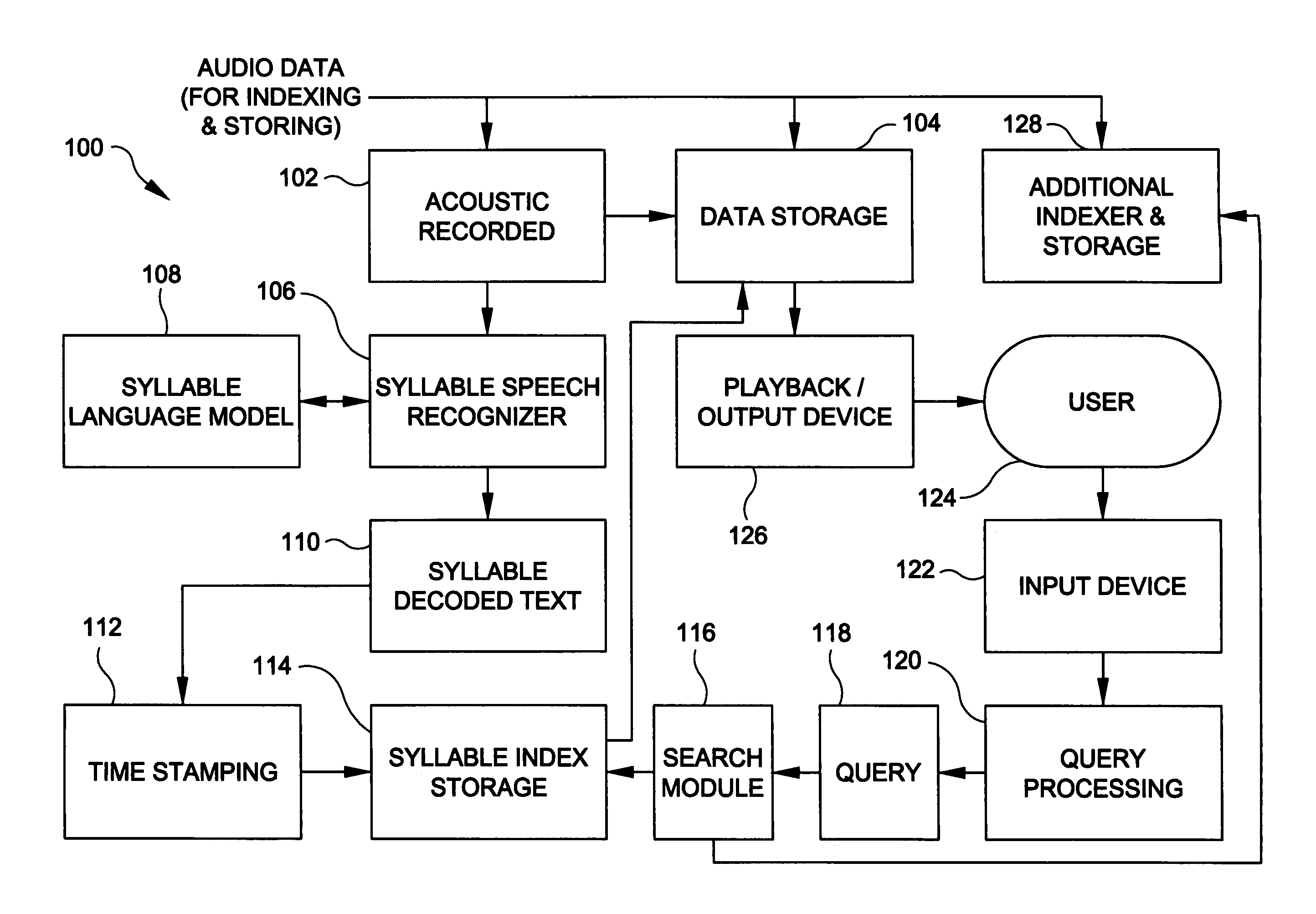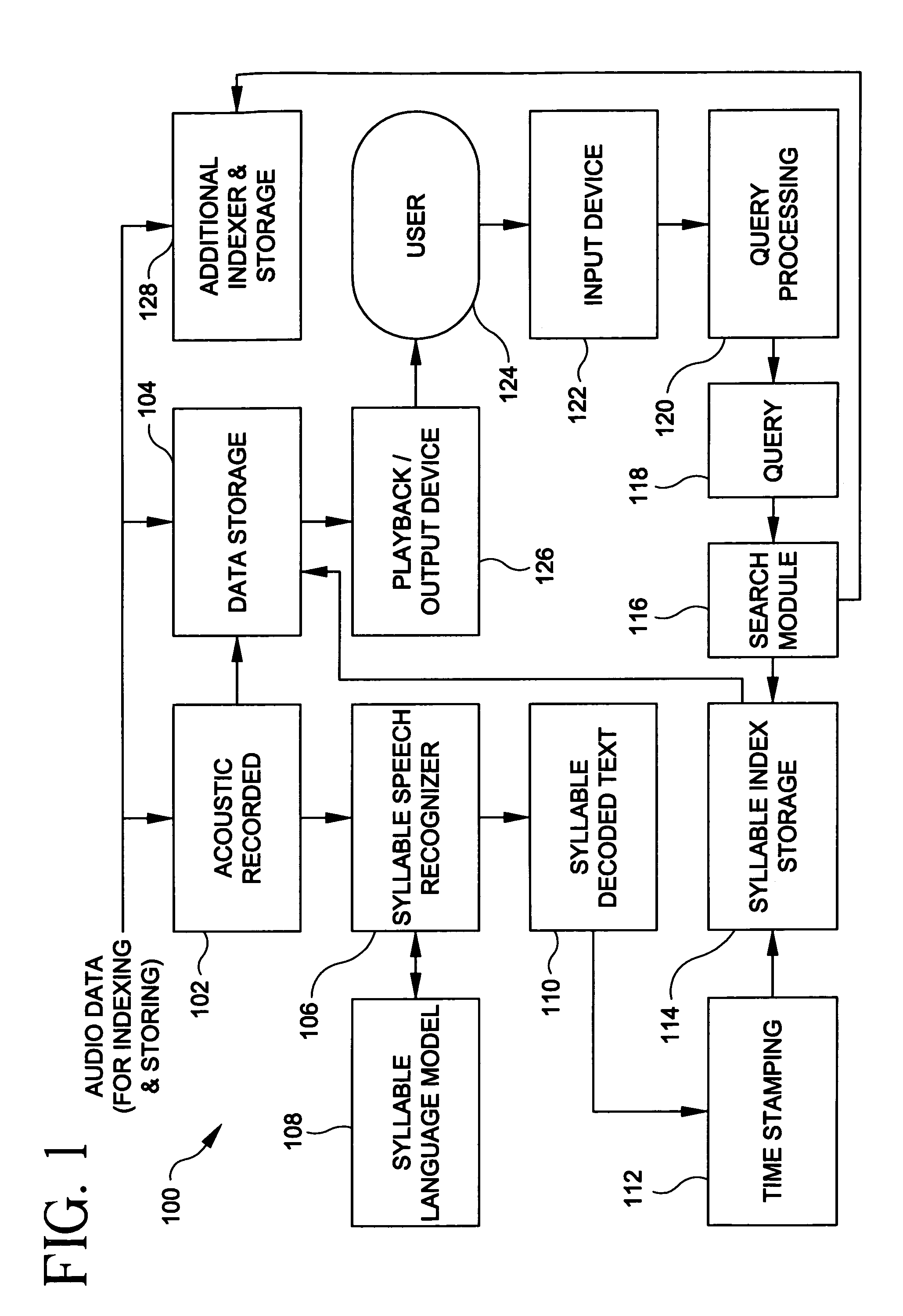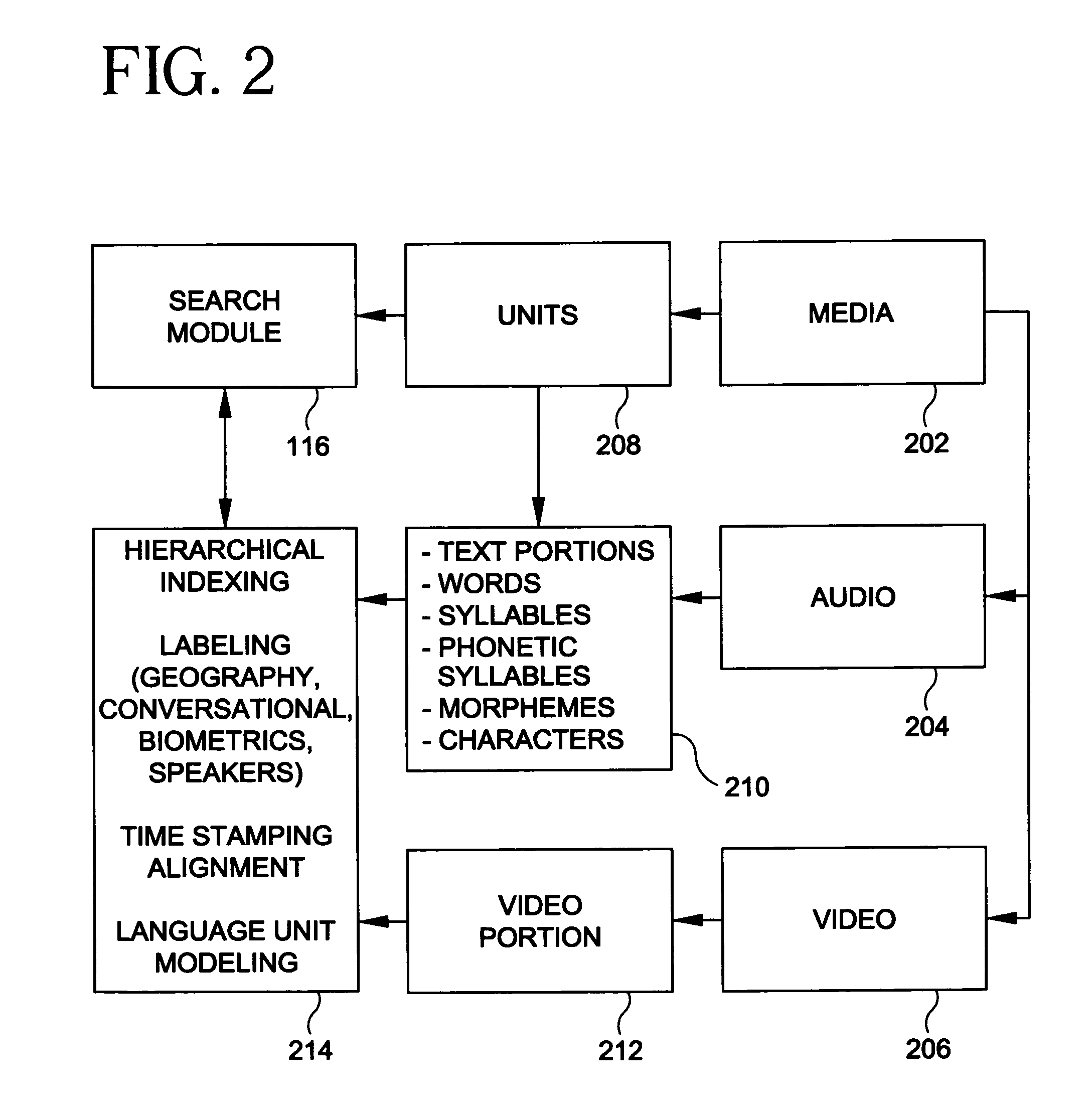Methods and apparatus for semantic unit based automatic indexing and searching in data archive systems
a data archive and semantic unit technology, applied in the field of data archive systems, can solve the problems of low phonetic recognition accuracy, and low data compression efficiency, and achieve the effect of data compression and efficiency
- Summary
- Abstract
- Description
- Claims
- Application Information
AI Technical Summary
Benefits of technology
Problems solved by technology
Method used
Image
Examples
Embodiment Construction
[0032]The present invention will be explained below in the context of an illustrative syllable based indexing and searching implementation. However, it is to be understood that the present invention is not limited to such a particular implementation. Rather, the invention is more generally applicable to indexing and searching of audio data using semantic units, syllables being just one example of a semantic unit. For example, the invention advantageously finds application in any implementation where it is desirable to provide audio based data indexing and searching capabilities to a user such that the user does not need to be concerned with entering unknown words in his query to the system. The invention is particularly suitable for use with such languages as mentioned above, e.g., Asian and Slavic languages. However, the invention is not limited to use with any particular language.
[0033]Referring now to FIG. 1, apparatus for indexing and searching an audio recording via syllables a...
PUM
 Login to View More
Login to View More Abstract
Description
Claims
Application Information
 Login to View More
Login to View More - R&D
- Intellectual Property
- Life Sciences
- Materials
- Tech Scout
- Unparalleled Data Quality
- Higher Quality Content
- 60% Fewer Hallucinations
Browse by: Latest US Patents, China's latest patents, Technical Efficacy Thesaurus, Application Domain, Technology Topic, Popular Technical Reports.
© 2025 PatSnap. All rights reserved.Legal|Privacy policy|Modern Slavery Act Transparency Statement|Sitemap|About US| Contact US: help@patsnap.com



